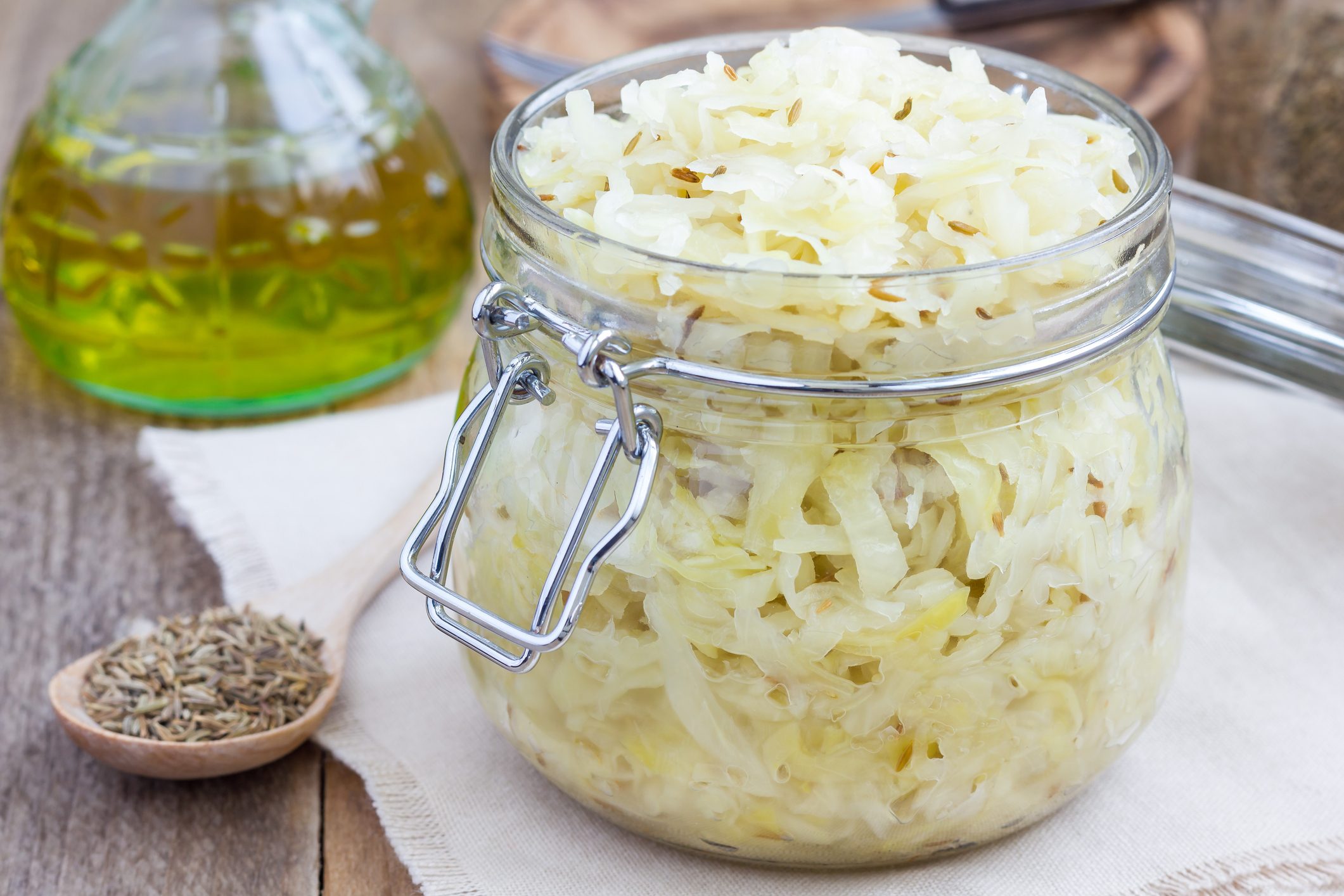How to quickly and easily cook sauerkraut
Sauerkraut is quick and easy to prepare: you just need to wait for the resting time for fermentation. You can then use sauerkraut to accompany your autumn dishes based on sausages, cotechino, wurstel; you will prepare dishes in perfect Bavarian style. So let’s see how to prepare sauerkraut in a few simple steps.
;Resize,width=742;)
Sauerkraut is quick and easy to prepare; it is obtained from the fermentation of cabbage, made thanks to the addition of fine salt. Once ready, you can use the sauerkraut to accompany your autumn dishes based on sausages, cotechino, wurstel, boiled meats, pork hock; in fact, sauerkraut perfectly combines with fatty dishes, thanks to their acidity given by the fermentation. So let’s see how to prepare sauerkraut in a few simple steps, to create recipes in perfect Bavarian style.
How to make sauerkraut without fermentation

Cut the white cabbage, divide it into four parts by removing the core and the outer leaves. With a sharp knife cut it into thin strips and wash it well in cold water. Now pass it in a salad spinner or dry it with kitchen paper. Now place the cabbage in an earthenware pan with 3 juniper berries, 3-4 bay leaves, 1 teaspoon of cumin seeds and 2 teaspoons of fine salt to facilitate the fermentation process. Close the container well with parchment paper and string, so as not to let the air pass; in fact for a correct fermentation the sauerkraut must be completely immersed in the brine. Alternatively, you can cover it with cling film and place a weight on it (for example a plate). Now put the container in a cool place and away from light for 1 month; during this period the cabbage will undergo the natural fermentation process. Once ready, wash it for a long time under running water and then you can consume it raw, so as to promote digestion, or you can cook it in a pan. Then use sauerkraut to accompany sausages, wurstel, meat or to fill sandwiches.
Cooked sauerkraut without fermentation: quick preparation

If you want to prepare quick sauerkraut, you can avoid the fermentation process with a very simple procedure. Cut the cabbage, remove the core and outer leaves and cut it into strips. Soak it in cold water for at least 30 minutes and dry it with kitchen paper. Now put it in a pan with onion, extra virgin olive oil and a few cubes of bacon, cook and stir from time to time. Simmer with white wine or vinegar; if the cabbage becomes too dry, add a little water.
Ready-to-use canned sauerkraut for super quick recipes
For the preparation of super quick recipes you can use ready-to-use canned sauerkraut. Pre-cooked sauerkraut is really easy to prepare; drain it from the liquid and rinse it. In a pan, brown the onion with oil or butter, add the sauerkraut and cook for 5 minutes, stirring often. To reduce the acidity, you can blend it with a little water, broth or white wine. As soon as the liquid has evaporated, add a bit of fine salt. This type of sauerkraut will be excellent for seasoning a sandwich with sausage and mustard or for the preparation of Tyrolean sauerkraut, for a quick and tasty dinner.

Tips
To prepare fresh sauerkraut, choose a cabbage from organic farming; fermentation takes place naturally, thanks to the bacteria contained in the leaves, which is why it is important that no chemicals have been used.
For the preparation of sauerkraut, it is usually used white cabbage but you can also use red cabbage or savoy cabbage.
For a correct fermentation, the cabbage must be completely immersed in its vegetation water; for this reason, during the resting phase, it must not come into contact with the air. Fine salt is important for fermentation and also to prevent the proliferation of gram-negative bacteria, while favoring that of good microbes, such as lactobacilli.
How to store sauerkraut
Once ready, the sauerkraut can be stored in the refrigerator for a week in an airtight container.
;Resize,width=767;)
;Resize,width=712;)


